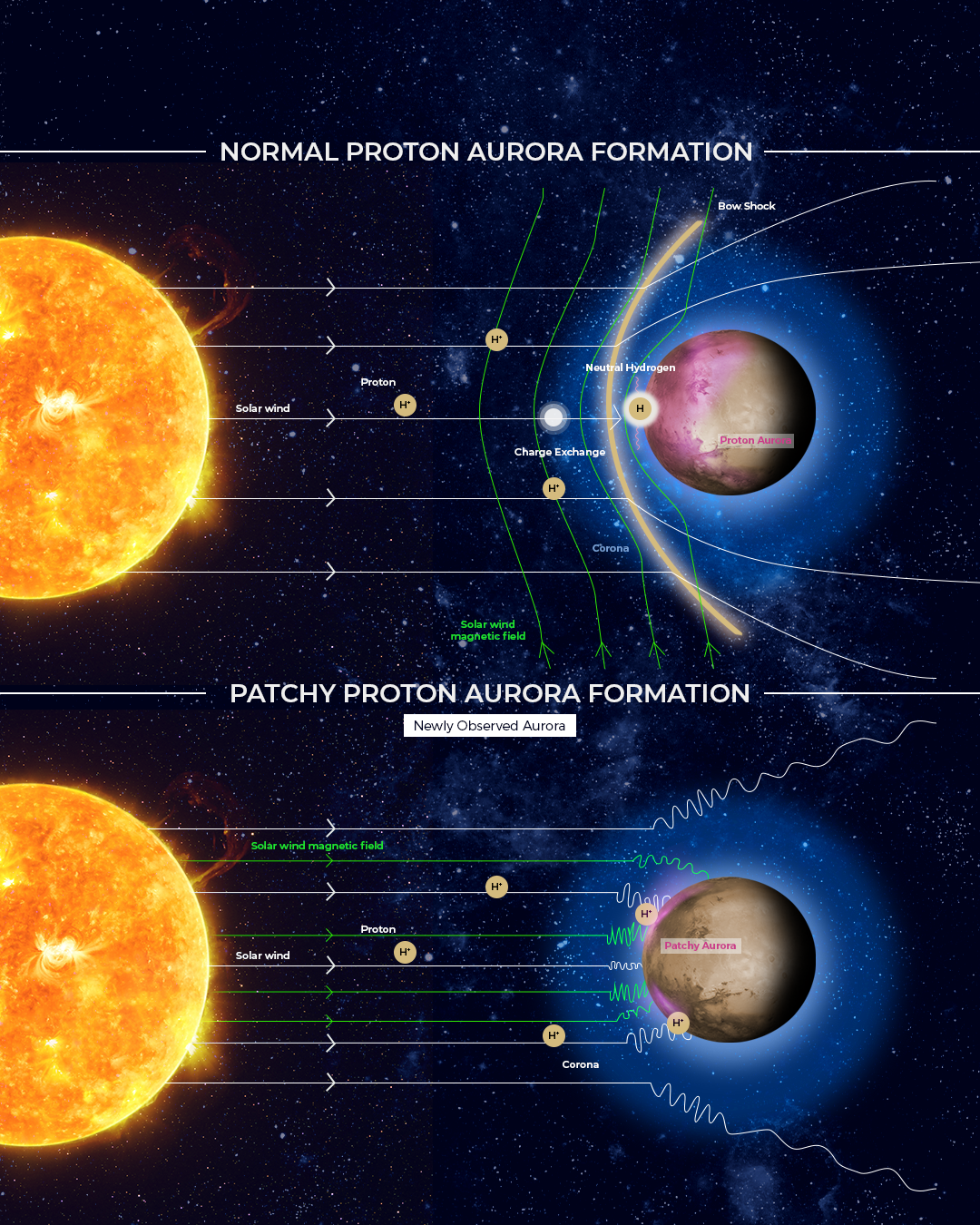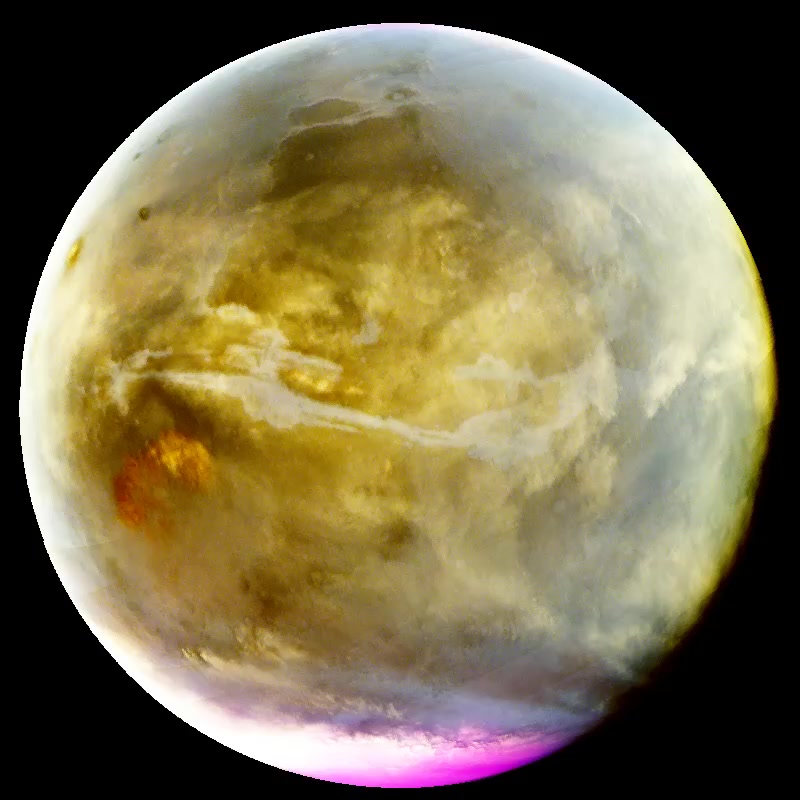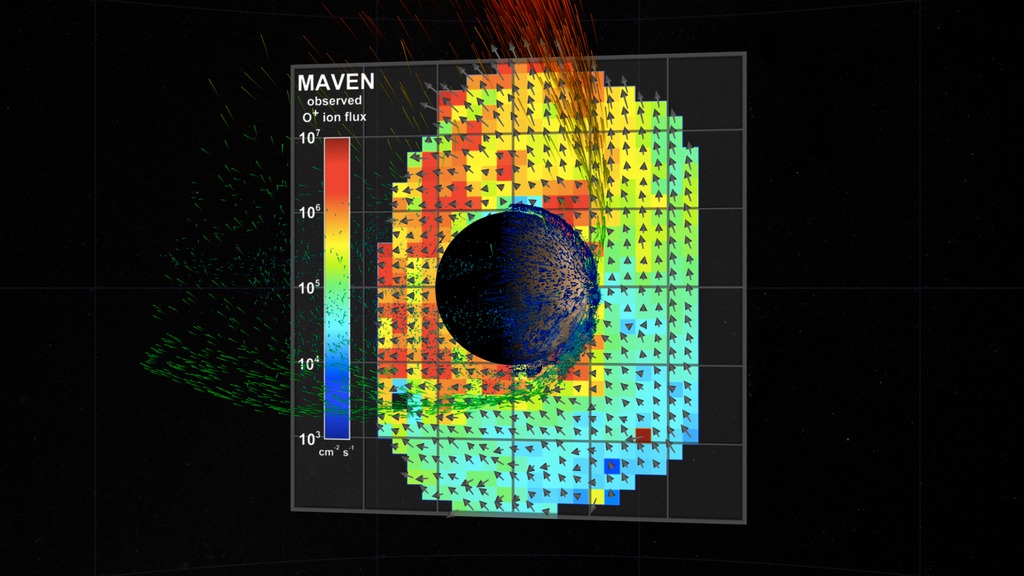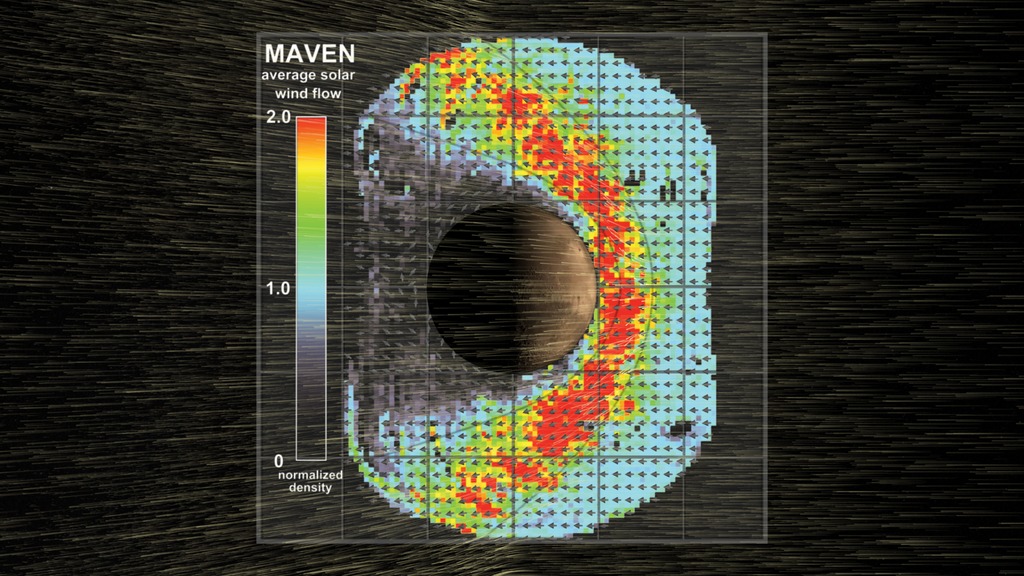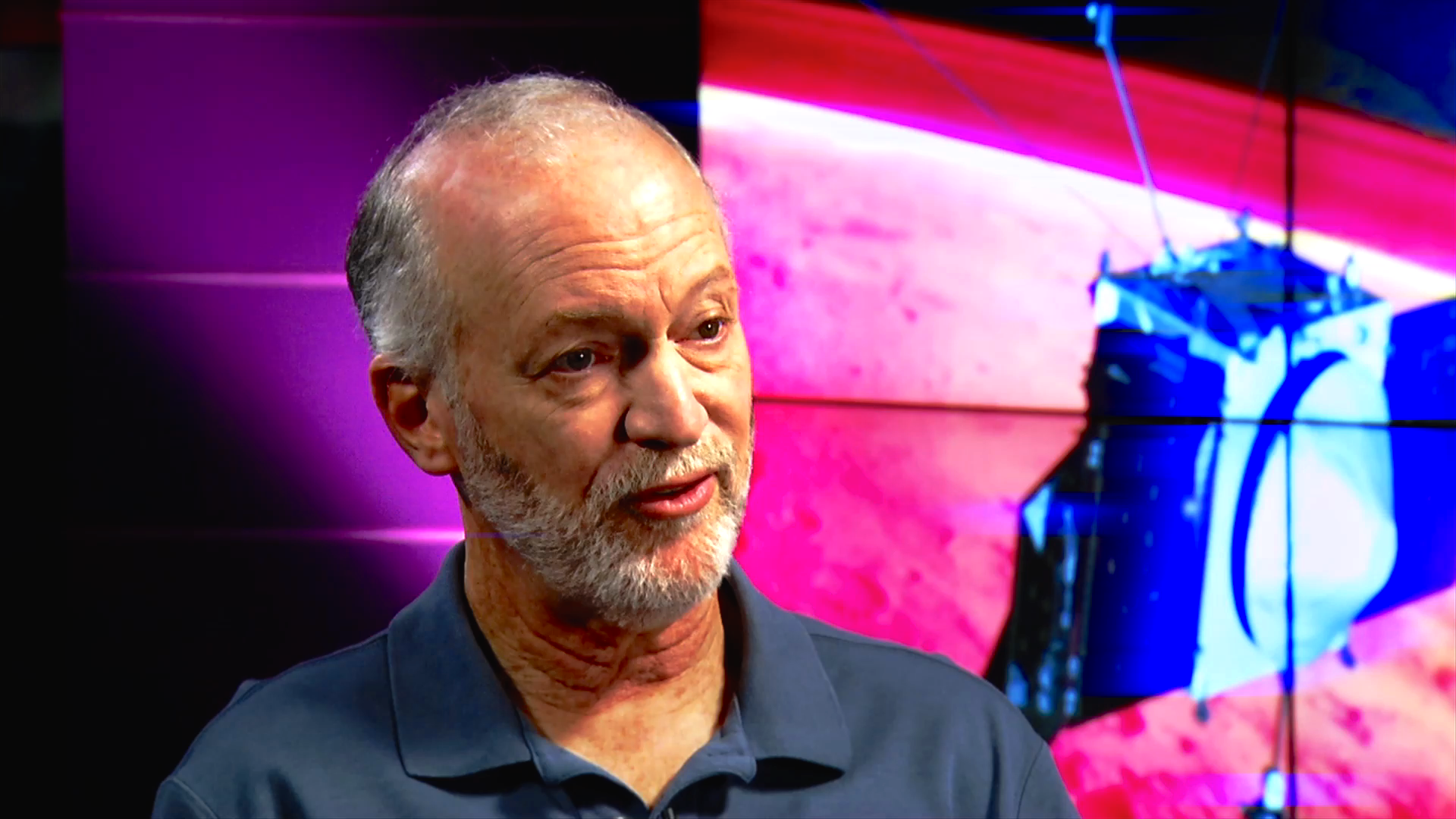Mars Proton Aurora
On Earth, the northern and southern lights occur when the solar wind (electrically charged particles from the Sun) follow our planet's geomagnetic field lines to the poles and collide with the upper atmosphere. Mars lacks a global magnetic field, so instead the solar wind piles up in front of Mars in a bow shock, which blocks charged particles from reaching the bulk of the atmosphere. However, in a process first observed by the MAVEN mission, some solar wind protons can slip past the bow shock by first bonding with electrons from the Mars upper atmosphere to form hydrogen atoms. Because these hydrogen atoms are electrically neutral, they can pass through the bow shock and go on to create an ultraviolet proton aurora on the dayside of Mars.
Learn more about MAVEN's observation of a proton aurora at Mars.

ANIMATED GIF - The Martian atmosphere during a proton aurora.

ANIMATED GIF - Mars proton aurora with data from the MAVEN Imaging Ultraviolet Spectrograph (IUVS) at bottom. Credit: NASA/MAVEN/University of Colorado/LASP/Anil Rao
ANIMATION - Mars proton aurora with data from the MAVEN Imaging Ultraviolet Spectrograph (IUVS) at bottom. Credit: NASA/MAVEN/University of Colorado/LASP/Anil Rao
Watch this video on the NASA.gov Video YouTube channel.

ANIMATED GIF - Alternate version displaying all charge exchanges.

GRAPHIC - Protons from the solar wind approach the Martian upper atmosphere.

GRAPHIC - Solar wind protons undergo a series of charge exchanges to slip past the bow shock, causing a proton aurora.
For More Information
See NASA.gov
Credits
Please give credit for this item to:
NASA's Goddard Space Flight Center
-
Scientists
- Nick Schneider (LASP)
- Bruce Jakosky (LASP)
-
Illustrator
- Dan Gallagher (USRA)
-
Animator
- Anil Rao (Metropolitan State University of Denver)
-
Science writer
- William Steigerwald (NASA/GSFC)
-
Technical support
- Aaron E. Lepsch (ADNET Systems, Inc.)
Missions
This page is related to the following missions:Series
This page can be found in the following series:Release date
This page was originally published on Monday, July 23, 2018.
This page was last updated on Thursday, November 9, 2023 at 12:29 PM EST.
